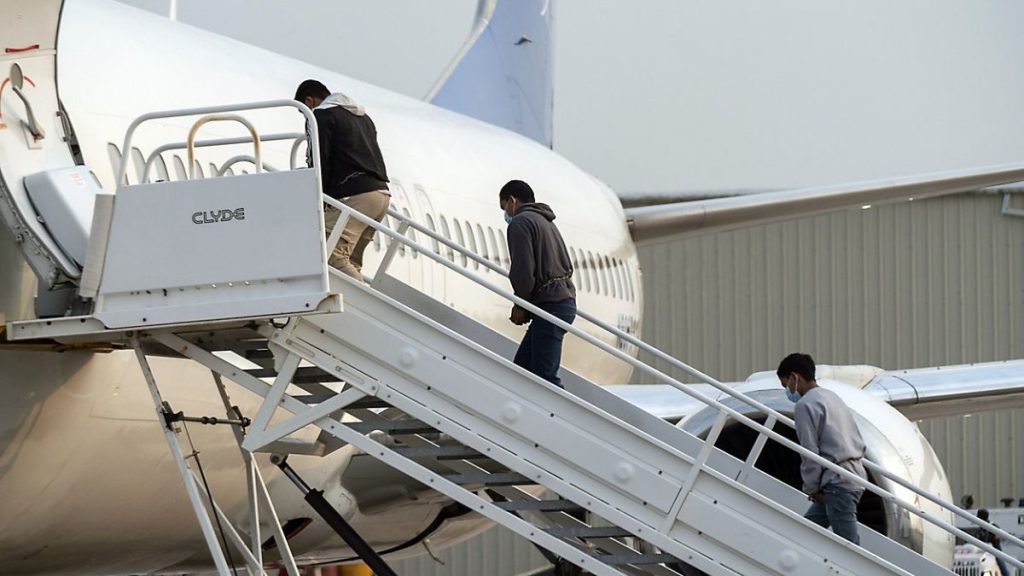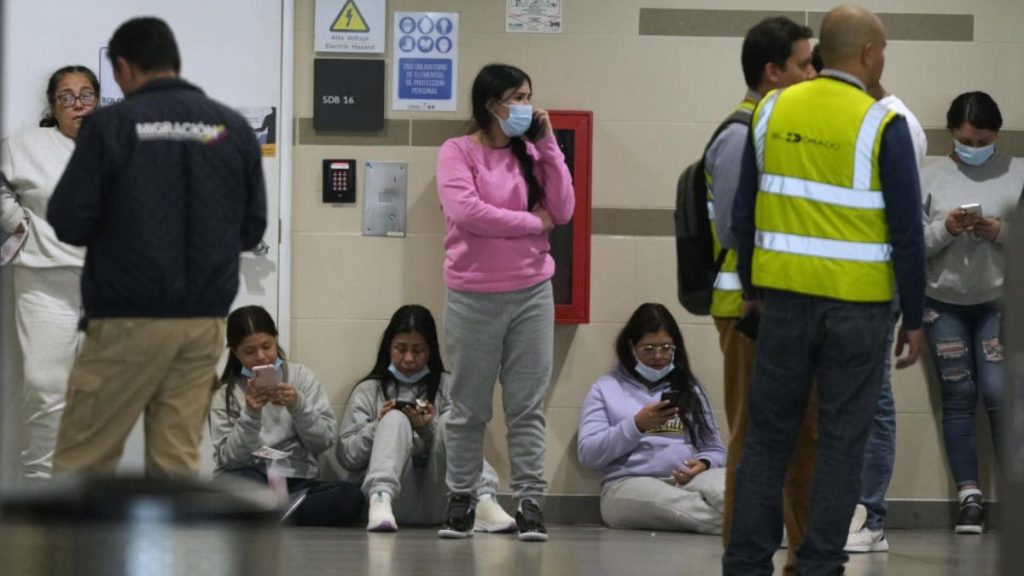Trump’s Self Deportation Program Sees 64 Migrants Return Home to Colombia and Honduras
I want to start by telling you about something happening right now that doesn’t get enough attention: Project Homecoming. It’s a government program started during the Trump administration, designed to help migrants who want to return to their home countries voluntarily.
Recently, 64 migrants said goodbye to the U.S. on charter flights heading back to Honduras and Colombia. This isn’t just a statistic; it’s a real movement of people making tough choices about their futures.
The Department of Homeland Security (DHS) officially announced these flights on May 19, 2025, emphasizing that this is a self-deportation program — meaning migrants choose to leave on their own terms, rather than being forced out. The flights took off mainly from Houston, which has become a hub for these return journeys.
What caught my eye is that while the news headlines focus on numbers and government statements, very few reports dig into why migrants are opting for this path or what happens to them once they’re back home. The story behind these flights is more complex, and it’s important to understand the human angle, the policy context, and what this means for everyone involved.
So, let’s break down what Project Homecoming really is, how it works, and why these 64 migrants’ journeys matter—not just to them, but to us as well.
Why Are Migrants Choosing Self-Deportation?
You might wonder, why would anyone voluntarily choose to leave the U.S. after all the effort it takes to get here? That’s the big question I kept coming back to. From what I gathered, many migrants see self-deportation as a way out of an impossible situation.
According to a BBC report, many migrants face harsh economic struggles, fear of deportation, and uncertain legal battles in the U.S. These pressures push them toward programs like Project Homecoming. It’s not about giving up—it’s about choosing dignity over endless hardship.
Some told reporters they want to reunite with family or escape the mental toll of living in limbo. These aren’t just numbers; these are real people making difficult decisions, weighing the risks of staying against the hope of rebuilding back home. Social media also shows migrants sharing mixed feelings—some relieved, others anxious about what’s next.
The Process of Project Homecoming Flights

Now, how does this all actually work? Texas Tribune’s coverage gives a clear picture: these aren’t random flights. They’re carefully coordinated charter flights, primarily operating out of Houston, that transport migrants safely back to their home countries.
Migrants apply voluntarily, get approvals from DHS, and then board these special flights to Honduras or Colombia. The process is meant to be smooth and humane, with government agencies overseeing everything to ensure safety.
It’s important to note this is not forced deportation. It’s a self-chosen path, with logistical support to help migrants return in an organized way, rather than risking dangerous, unofficial border crossings.
Just like FEMA organizes support and resources to help communities recover after events like the March storms in Missouri, the Department of Homeland Security arranges Project Homecoming flights to assist migrants returning home in a safe and coordinated manner.
What Happens to Migrants After They Return?
This part is often left out of the conversation, but it’s crucial. When migrants return home, their journey isn’t over—it’s actually just beginning. Many face real challenges trying to rebuild their lives.
Jobs might be hard to find, families could be strained, and support systems aren’t always there. The economic problems they left behind in the U.S. don’t just disappear; sometimes they’re even worse. It’s a tough reality, and not everyone gets the help they need to start fresh.
You’ll find stories of hope mixed with struggle. Some manage to find a way, while others feel stuck. These return journeys deserve as much attention as the flights themselves.
Have you or someone you know faced similar challenges after moving back home or starting fresh elsewhere? Share your stories or thoughts below—I’m keen to hear different perspectives
Political and Social Implications of Project Homecoming
Project Homecoming isn’t just about flights; it’s deeply tied to politics and immigration policy debates. According to UPolitics, the program is framed as a way to reduce undocumented immigration by encouraging voluntary returns. But it also raises questions about the effectiveness and humanity of such approaches.
Some see it as a practical step toward border control, while critics argue it sidesteps the deeper issues migrants face and offers only a temporary fix. The governments of Honduras and Colombia have shown mixed reactions—welcoming returned citizens but also concerned about their reintegration needs.
This program reflects the larger struggle in U.S. immigration policy: balancing enforcement with human rights and finding long-term solutions that work for everyone. It’s a conversation that’s far from over.
For those tracking immigration policies and breaking developments closely, there’s a growing community sharing real-time insights and updates through a WhatsApp discussion group—it’s worth checking out if you want to stay informed beyond mainstream headlines.
The Gaps and Controversies Around Project Homecoming

Project Homecoming sounds like a simple fix, but it’s definitely not without its problems. Some human rights groups and migrant advocates argue that it doesn’t really solve the deeper issues migrants face. It feels more like a quick patch than a real solution.
A lot of migrants who return don’t get much support once they’re back home. And honestly, is this really a choice? Some say it’s more about having no other option than a true decision to leave. Plus, there are big ethical questions — is it right to push people to go back when their home countries might not be ready to welcome them properly?
If you scroll through social media, you’ll find all kinds of debates. Some people share heartbreaking stories, while others defend the program as practical. This gap between what the policy says and what migrants actually experience is what makes this whole thing tricky and worth talking about.
What’s your take on self-deportation programs like Project Homecoming? Do you see them as practical solutions or just temporary fixes? Drop your opinions below—let’s get the conversation going
What Could the Future Look Like?
Looking ahead, I wonder — will Project Homecoming grow? Will migrants get better support when they return? Or will it just stay a temporary fix that leaves a lot of people stuck?
Some experts say we need to think bigger — like creating programs that not only help migrants leave but also support them in rebuilding their lives back home. NGOs and international groups might step up more in the future.
And what about the migrants who don’t want to or can’t go back? We need better legal pathways, community support, and real immigration reforms to give them options too.
Conclusion
At the end of the day, Project Homecoming isn’t just about flights or policies. It’s about people—real lives caught in complicated situations. These 64 migrants who recently left the U.S. made a tough choice, and their stories deserve more than just headlines.
We’ve seen how the program works, why some choose it, and what challenges come after. But what sticks with me is the human side—the hopes, the fears, and the struggle to find a place to belong.
If there’s one thing I want you to take away, it’s this: migration is never simple. Policies can help or hurt, but they can’t replace understanding. So next time you hear about a program like this, remember the people behind the numbers.
What do you think? Have you come across stories of migrants making similar choices? Or maybe you know someone affected by these policies? I’d love to hear your thoughts.
If you found this breakdown helpful, I share more stories like this regularly—stay connected for deeper dives into policies that affect real lives.
Disclaimer: This article is based on publicly available information and aims to provide an unbiased overview of Project Homecoming. The views expressed here do not represent any official government stance. Readers are encouraged to seek out multiple sources for a well-rounded understanding.


